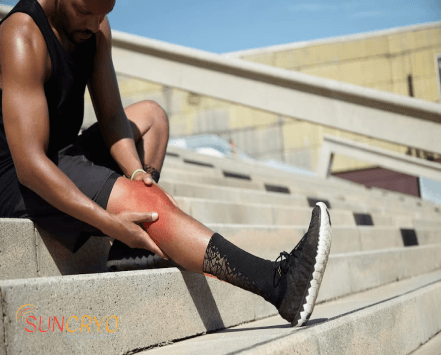Knee Injury Prevention for Athletes

In the realm of sports and athletics, maintaining optimal physical health is crucial, and one area that demands particular attention is knee injury prevention. At [georgetownsuncryo], we understand the significance of providing athletes with up-to-date and reliable information. In this comprehensive guide, we delve into the latest guidelines on knee injury prevention for athletes, offering insights and strategies to ensure athletes remain at the top of their game.
Understanding the Importance of Knee Injury Prevention
Knee injuries can be debilitating for athletes, leading to setbacks in training, competitions, and overall performance. Staying informed about the newest guidelines is pivotal for athletes and their coaches. These guidelines are not only designed to prevent injuries but also to enhance athletes’ longevity in their respective sports.
Key Components of Effective Knee Injury Prevention
1. Proper Warm-up and Cool-down Routine
A well-structured warm-up and cool-down routine significantly reduces the risk of knee injuries. Athletes should engage in dynamic stretches and exercises that target the muscles around the knee joint. By increasing blood flow and flexibility, the knee becomes better prepared for the demands of the sport.
2. Biomechanics and Technique
Correct biomechanics and technique play a pivotal role in preventing knee injuries. Coaches and trainers should provide athletes with guidance on proper form during movements that involve the knee joint. Analyzing and refining movement patterns can reduce unnecessary strain on the knee.
3. Strength Training and Conditioning
Building strength in the muscles surrounding the knee is a proactive approach to injury prevention. Exercises that target the quadriceps, hamstrings, and calf muscles help stabilize the knee joint. A well-rounded strength training regimen enhances joint stability and resilience.
4. Flexibility and Mobility Work
Maintaining optimal joint flexibility and mobility is essential for preventing knee injuries. Athletes should incorporate regular stretching and mobility exercises into their routines. These practices help maintain a healthy range of motion, reducing the risk of overuse injuries.
The Role of Nutrition in Knee Injury Prevention
A holistic approach to knee injury prevention extends beyond physical training. Proper nutrition plays a crucial role in maintaining strong and healthy joints. Adequate intake of nutrients such as calcium, vitamin D, and omega-3 fatty acids supports bone health and reduces the risk of fractures and injuries.
Footwear and Its Impact on Knee Health
Athletes should pay attention to their choice of footwear as it directly impacts knee health. Appropriate footwear provides adequate support and cushioning, reducing the impact on the knee joint during physical activities. Consulting with a sports podiatrist can aid in selecting the right footwear for specific sports.
Recovering from Knee Injuries: A Comprehensive Approach
In the unfortunate event of a knee injury, a comprehensive recovery plan is essential. This plan should include a combination of rest, physical therapy, and gradual reintegration into sports activities. Collaborating with medical professionals ensures a safe and effective recovery process.
Conclusion
In conclusion, prioritizing knee injury prevention is paramount for athletes aiming to excel in their chosen sports. By implementing a well-rounded approach that includes proper warm-up routines, biomechanical awareness, strength training, and comprehensive recovery strategies, athletes can significantly reduce the risk of knee injuries. At [georgetownsuncryo], we remain committed to providing athletes with the latest and most effective strategies for achieving peak performance while safeguarding their knee health.
Remember, injury prevention is a journey that requires dedication, knowledge, and consistent implementation. By embracing these guidelines, athletes can stay ahead in their sports and enjoy sustained success without the hindrance of knee injuries. https://www.jospt.org/doi/10.2519/jospt.2023.0503
